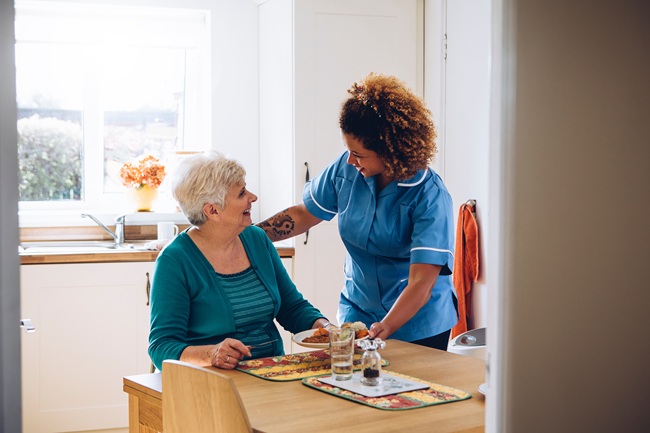
As more people choose to age in place, and healthcare providers focus on delivering cost-effective, high-quality care, the demand for home and community-based services is increasing. Many people can remain healthy and safe in their home, even with chronic health conditions with some help and support. Home Care can help fill this need, however, there is often confusion about the different types of home care and when they are appropriate. Both certified medical home care and non-medical home care are vital parts of the care continuum, but their purpose, scope, and eligibility requirements vary significantly. Whether you’re a caregiver, family member, or planning for your future, understanding both options can help you make well-informed decisions and access the right care at the right time.
What is Certified Medical Home Care?
Certified medical home care—also called skilled home health care—is provided under the supervision of licensed healthcare professionals like registered nurses, physical therapists, and occupational therapists. Usually ordered by a doctor, this type of care is regulated and reimbursed by Medicare, Medicaid, or private insurance.
- Key Characteristics of Medical Home Care:
- Must be ordered by a physician.
- Delivered by licensed clinicians (e.g., RNs, therapists, home health aides under supervision).
- Typically, it includes wound care, medication administration, IV therapy, post-surgical recovery, and physical rehabilitation.
- Short-term and goal-oriented—focused on recovery or stabilization.
- Certified by CMS (Centers for Medicare & Medicaid Services).
What is Non-Medical Home Care?
Non-medical home care helps people with daily activities, offers companionship, and keeps a home safe. It is usually not covered by Medicare and is paid for privately, with long-term care insurance, or through Medicaid waiver programs.
- Key Characteristics:
- No physician order required.
- Provided by trained caregivers or aides (not necessarily medically licensed or certified).
- Services include bathing, dressing, meal preparation, housekeeping, medication reminders, transportation, and companionship.
- It can be long-term and adapted as the person’s needs change.
- Ideal for those needing assistance to remain independent at home.
Meeting Evolving Needs with Integrated Support
Home care provides a crucial bridge between hospital, rehabilitation, assisted living, and independent living. Addressing needs in the home environment can help individuals avoid costly emergency room visits and hospital re-admissions. It supports chronic disease management in a patient-preferred setting and extends the reach of health systems into the community, meeting patients where they are. It provides peace of mind and can lighten the responsibilities of family caregivers.
For many families, the best approach involves using both types of care. For instance, someone recovering from surgery might receive certified medical home care initially and then transition to non-medical support for long-term help at home.
As health conditions change and individual needs shift, home care can help people stay healthier, safer, and more independent in their preferred setting. By combining medical care, personal assistance, and social supports, home care addresses both clinical conditions and activities of daily living. This integrated approach improves outcomes, lowers costs, supports value-based care goals, and ensures people receive the right care at the right time in the right place.
Our aging population is growing. Home care will be an essential part of meeting the needs of this population. Understanding the differences between certified medical and non-medical home care can help families, caregivers, and individuals make the best choice for their unique healthcare needs, which will ultimately enhance quality of life.
Peggy Stockel is the President/CEO of Stonehill Communities. She has 40 years of experience in aging services and is passionate about enhancing the health and quality of life of older adults as well as improving the efficiency of our health care systems. She can be reached at 563.557.7180.
This article was originally published in CHOICES For Fifty Plus, a Dubuque area magazine for people that are 50 and older. Single copies are available at Dubuque area newsstands or click here to read the digital version of the latest issue.
Read Julien’s Journal, CHOICES For Fifty Plus and Tri-State Home TRENDS from the Comfort of Your Home!
Click Here or call 563.557.7571 for convenient delivery to your home or business by mail of all three magazines for one low subscription price.


Comment here